KTM & Husky’s Cross-Country Models
For 20 years now, the KTM enduro models sold in Australia have not been readily available in America. Instead, KTM has shipped what they refer to as “cross-country” models to the Yanks; models that use a mix of components from their enduro and motocross bikes. The Kiwis got on the cross-country bandwagon several years ago – and especially since 2014, when the new-generation Husqvarna range (which included cross-country models) started rolling off KTM’s production line in Austria.
But what’s made these cross-country models so attractive to the Yanks and Kiwis? Why are sales of these ‘hybrid’ machines now gaining momentum in Australia? What are these cross-country bikes exactly? Which components do they run? And how do they actually perform relative to the enduro models we’re much more familiar with in Oz?
We figured it was time to answer the mounting list of questions asked about these cross-country machines from KTM and Husqvarna…
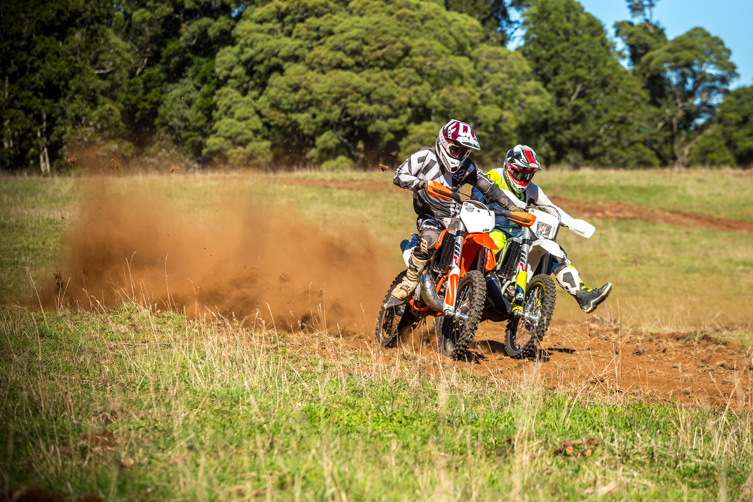
WHERE DID THESE ‘CROSS-COUNTRY’ MODELS COME FROM?
Believe it or not, KTM’s cross-country models have been available for 20 years now. Back in 1998, KTM first released the 200, 250, 300 and 380MXC two-strokes in the USA. The 400 and 520MXC four-strokes were added to the line-up in 2001. And then in 2007, the model designation was changed to XC (for the two-strokes) and XC-F (for the four-strokes). Why America? Because the ‘Green Sticker’ regulations in the USA are so strict (they require changes to the fuel tank, the fitment of overflow canisters, etcetera, etcetera), it would have been prohibitively expensive for KTM to make their EXC and EXC-F models road-registrable in that market. Plus, the mods required would have completely diluted the brand’s ‘Ready to Race’ mantra. KTM’s cross-country models were therefore introduced primarily for riders who wanted to compete on a lightweight, enduro-style bike. And since 2014, when the first KTM-made Huskys were produced, selected TX and FX models from Husqvarna have also been available.
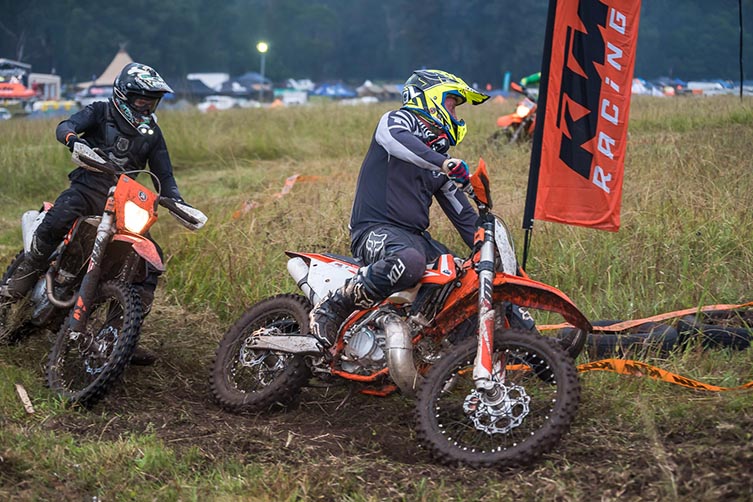
WHEN DID THESE CROSS-COUNTRY MODELS BECOME POPULAR IN AUSTRALIA, AND WHY?
Several years ago, KTM noticed that – much like in the USA – very few people were registering their dirt bikes in New Zealand, and that a greater majority of Kiwis were actually using motocross bikes to ride off-road. So as soon as KTM’s XC and XC-F models were introduced to the NZ market, they quickly gained sales momentum. In Australia, where there had been modest demand for the cross-country models, the introduction of Recreational Rego in Victoria certainly helped generate interest, but sales of the cross-country models really took off in 2016. Why? In short, because KTM/Husky’s cross-country models are typically a year ‘ahead’ of their enduro counterparts when it comes to major upgrades. So when the 2016 cross-country models came out with all the new-generation components introduced to the 2016 MX bikes (the all-new motor, chassis, suspension and bodywork), sales for KTM’s and Husqvarna’s cross-country models got a real shot in the arm. That prompted a lot of racers – guys who were already stripping a lot of unnecessary parts and weight off their enduro models, and who liked a more aggressive style of power delivery – to seriously consider buying a cross-country machine. The fact they were significantly lighter and cheaper than their enduro counterparts only added to that appeal.
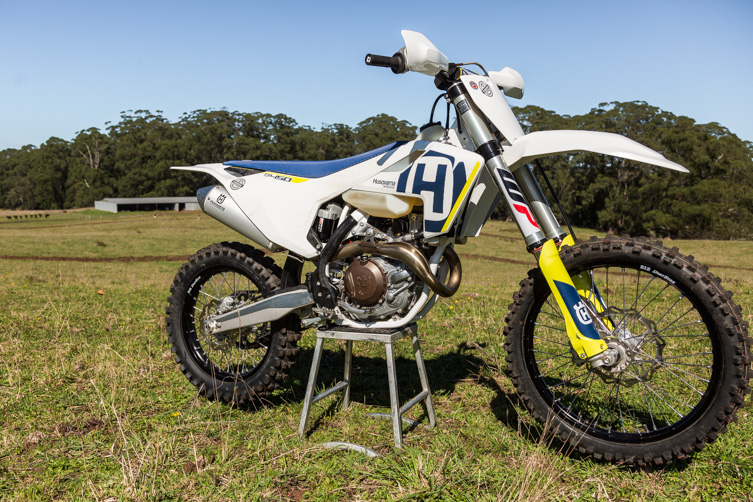
WHAT EXACTLY IS A CROSS-COUNTRY MODEL?
It’s a non-registrable model that combines elements of both the enduro and motocross models. Generally speaking, these cross-country models are more closely aligned to their motocross counterparts. KTM’s XC/XC-F and Husky’s TX/FX models all run their motocross cousins’ engine, exhaust system, frame, rising-rate shock linkage, billet triple clamps, map-selector switch, and suspension package (WP’s link-type shock absorber and 48mm “AER” air-sprung fork). Unlike the motocross bikes, they get an 18-inch rear wheel, larger-capacity fuel tank, beefier stator and wiring loom (which gives them the ability to run a headlight), and a sidestand. With Husqvarna’s cross-country models, it’s a little blurrier because the enduro models already use a rising-rate shock linkage. But both the FX and TX models (like KTM’s XC and XC-F) get WP’s link-type shock and AER air fork.
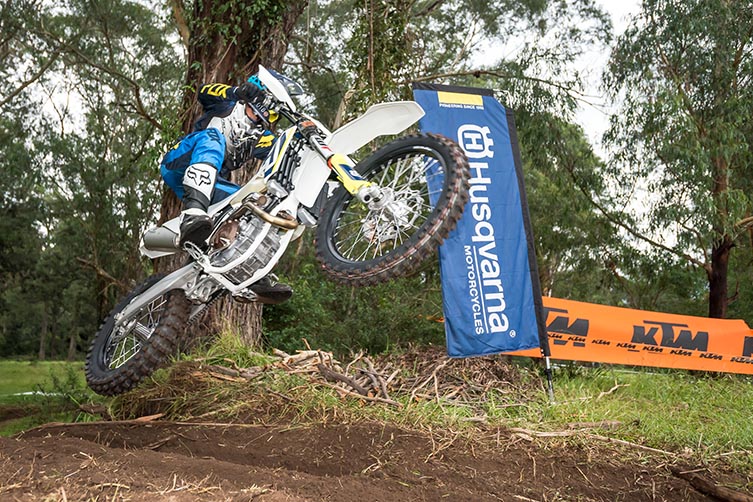
WHICH CROSS-COUNTRY MODELS ARE AVAILABLE FROM KTM AND HUSQVARANA?
For 2018, KTM offers four two-strokes (125XC-W, 150XC-W, 250XC, and 300XC) and three four-strokes (250XC-F, 350XC-F and 450XC-F). Husqvarna only produces two two-stroke cross-country models (TX125 and TX300) and two four-strokes (FX350 and FX450), as the FX250 was discontinued for 2018. Check out the accompanying RRP table for comparative prices and a component checklist for both brands’ 2018-model cross-country models.
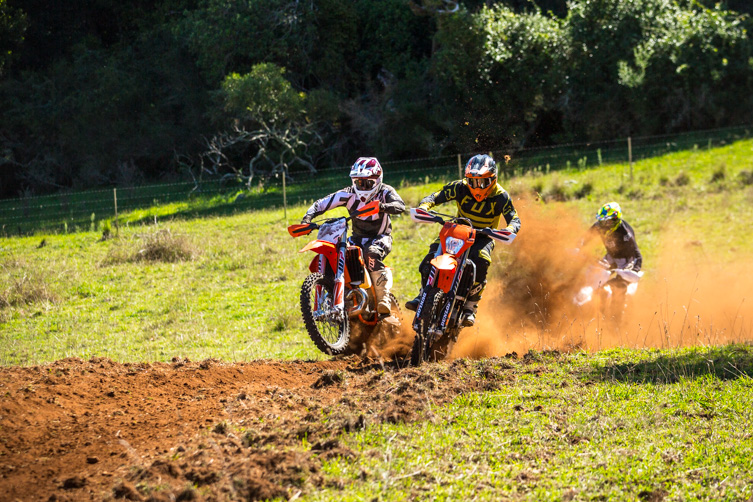
DO ALL CROSS-COUNTRY MODELS ALSO RUN THE MX MODELS’ FIVE-SPEED TRANSMISSION?
No. Only Husqvarna’s FX450 runs the same five-speed transmission as its motocross cousin, the FC450. KTM and Husky’s 125 and/or 150cc two-strokes use the enduro bike’s six-speed wide-ratio gearbox. But the rest of the cross-country range from both brands run a six-speed close-ratio transmission, which is a hybrid of what comes in the equivalent-capacity enduro and motocross models. In other words, each cross-country model is fitted with a specifically designed transmission to suit it.
WHAT ABOUT THE CLUTCH, IGNITION/MAPPING AND EXHAUST COMPONENTS?
The cross-country models all use the same engine, clutch (master and slave cylinders, clutch plates, and type), ignition (for two-strokes), mapping (for four-strokes), and exhaust systems as their motocross counterparts.
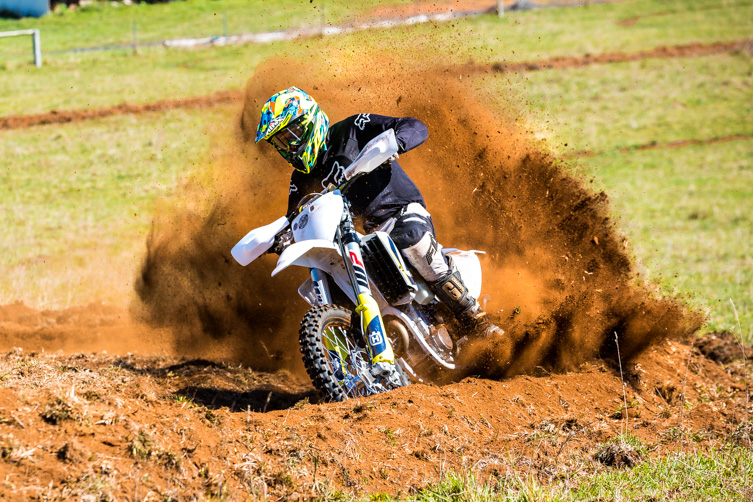
HOW DIFFERENT IS THE ROLLING CHASSIS USED BY THE CROSS-COUNTRY AND ENDURO MODELS?
The cross-country bikes get the stiffer MX-spec frames, which come with more gusseting (mainly around the headstem and footpeg area). For the KTMs, there are also subtle differences between the frames to accommodate the linkage versus no-linkage shock absorbers (interestingly, for the Finke Desert Race, where there are high-speed choppy bumps and sand rollers and whoops, even Pro riders tend to prefer the enduro frame because it has extra ‘give’, which makes for a more compliant ride relative to the stiffer MX-spec frame with linkage). The difference between the frames on Husqvarna’s FE/TE and FX/TX models is smaller because all models run a rising-rate shock linkage – though the linkage ratio used on Husky’s enduro and MX models is now slightly different.
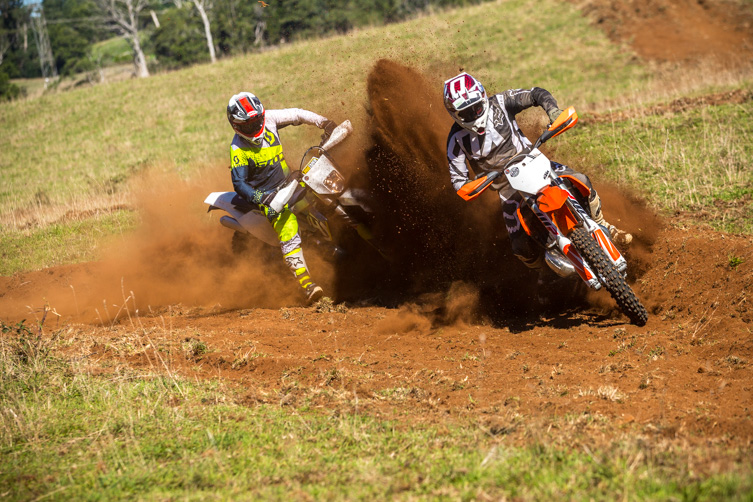
THE CROSS-COUNTRY AND MOTOCROSS MODELS ALL USE THE SAME WP “AER” AIR-SPRUNG FORK, BUT ARE THEIR SETTINGS DIFFERENT?
Yes. The valving specs used in the cross-country models are a little softer than their MX-model counterparts. Similarly, the recommended air pressure for the fork in the cross-country bikes is lower. This helps the bike turn faster in slower-speed corners, and delivers and a more compliant ride over the choppy roots and rocks you find off-road.
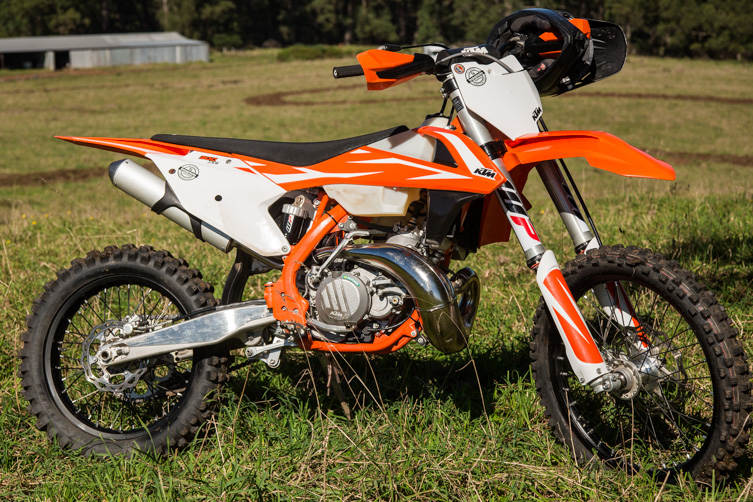
WHAT’S THE DIFFERENCE IN WEIGHT BETWEEN EQUIVALENT-CAPACITY ENDURO AND CROSS-COUNTRY MODELS?
That depends on which brand and capacity you’re talking about, and whether it’s a two-stroke or four-stroke. In broad terms, though, both brands’ cross-country models are around 4 to 7kg lighter than their enduro-model counterparts. The cross-country bikes are lighter because they use a smaller stator (which creates a lighter flywheel effect), a simpler wiring harness, no taillight, and fewer switchblocks. But the biggest single difference in weight is because WP’s AER air fork is almost 1.5kg lighter than WP’s conventional coil-sprung fork (the 48mm Xplor fork that’s used in all 2018 enduro models from KTM and Husky).
WHAT ARE THE DOWNSIDES OF OWNING A CROSS-COUNTRY MODEL?
Aside from the fact non-registrable models can’t be legally taken off-road in Australia where Rec Rego does not apply (that is, everywhere except Victoria), it’s much more difficult to sell a cross-country bike. Sure, they’re generally no more difficult to sell than second-hand MX bikes, but demand and resale values are substantially lower for the cross-country models compared with their registrable EXC/EXC-F and FE/TE counterparts.
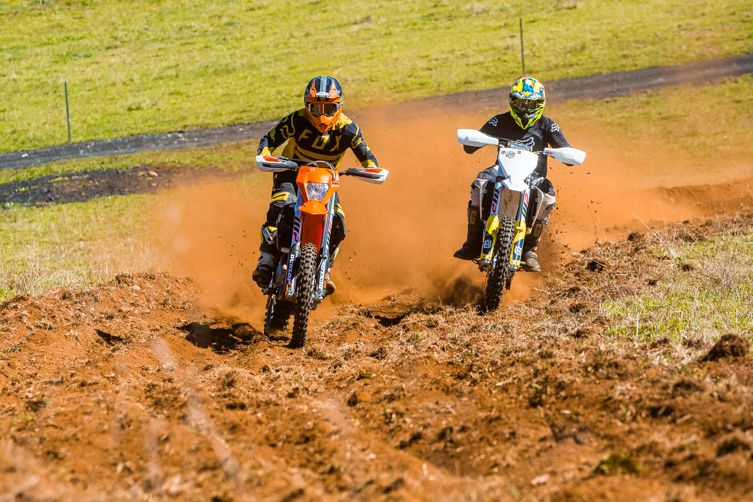
PRICING & COMPONENTRY
Check out these tables for a summary of the comparative RRPs and components used by KTM’s and Husqvarna’s 2018-model cross-country models.
* Click to enlarge each table.
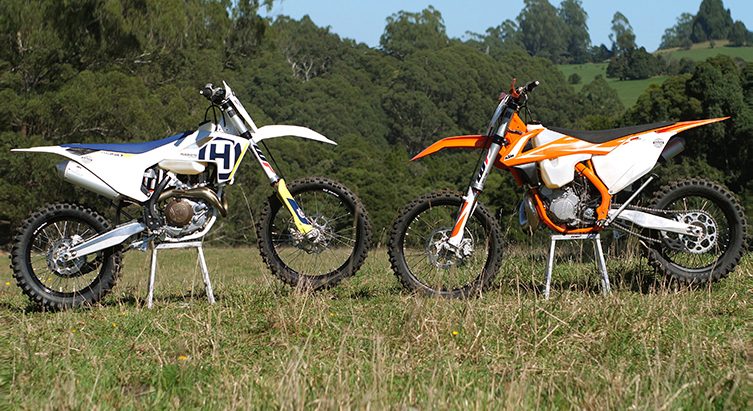
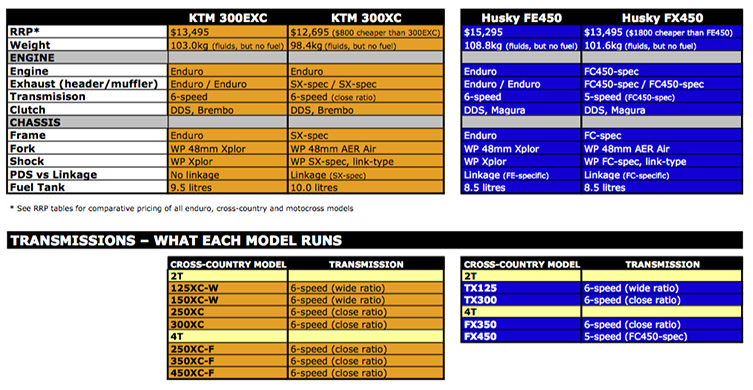
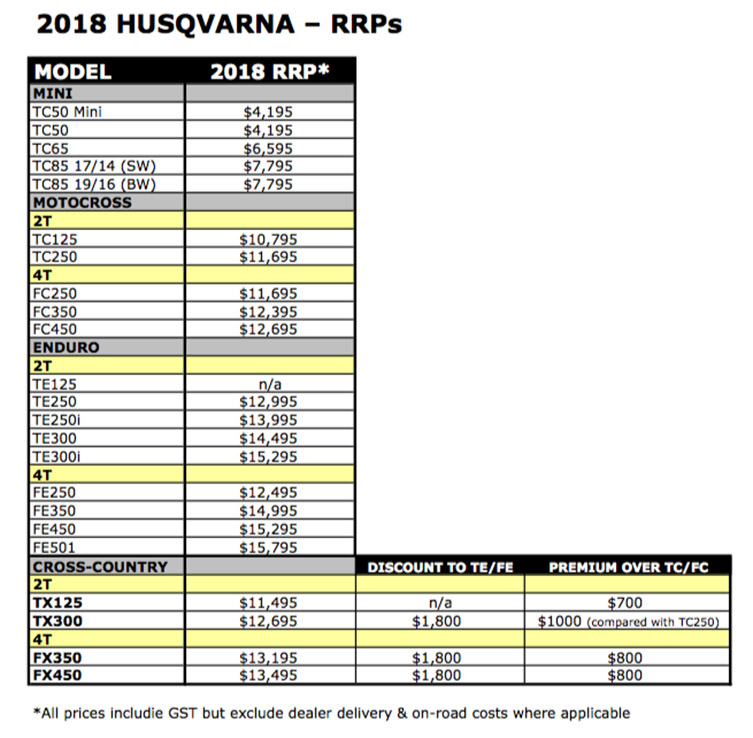
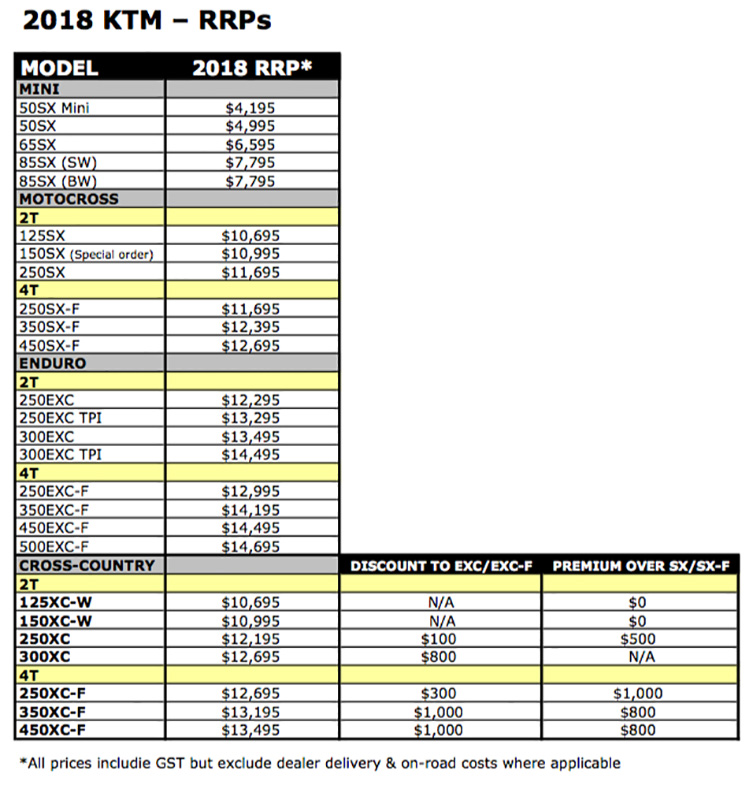







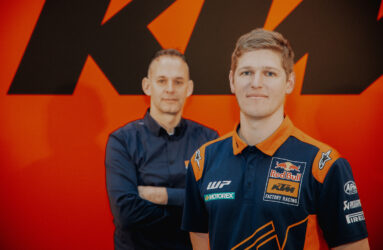
Be the first to comment...